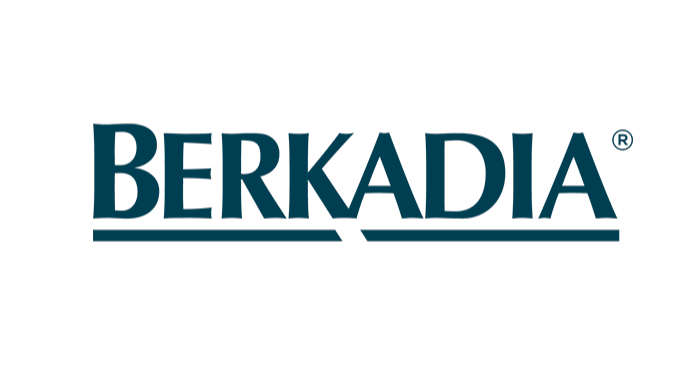Diversity and inclusion are popular buzzwords in many major organizations today, yet many of these organizations are finding that their efforts are not paying off like they expected. Even with substantial investments of time, money, and people, many organizations find that, although diversity has the potential for greater innovation and improved customer service, many of their efforts do not lead to higher performance.
To truly leverage diversity and create a culture of inclusion, an organization needs to move beyond valuing differences. Diversity and inclusion must become central components of performance strategy and not mere “add-ons” or “nice-tos”. Everyone in the organization needs to leverage diversity and inclusion as the specific means for achieving the organization’s mission and improving its bottom line.
Creating a culture of inclusion that leverages diversity
An organization with access to a wide range of talents, experiences, backgrounds, skills and perspectives will benefit from increased vision and greater innovation. With a larger variety of skills, organizations are able to reach out to new customer markets and find new business opportunities.
Leveraging diversity enables an organization to attain a higher level of performance and build a competitive edge. To leverage diversity, people in organizations must function in an inclusive environment, one that values their differences and allows them to bring their full selves to their work.
Achieving a breakthrough
Creating an inclusive environment can not be achieved with scattered programs and isolated training sessions focused on “awareness” or “understanding differences.” Since most organizations have traditionally been monocultural (i.e., dominated by one cultural group or style), the effort required to become more diverse and inclusive demands a break from the past. It requires a long-term strategic plan to transform the entire culture rather than just augment or delete certain exclusive or underperforming sectors. It requires a breakthrough, a new organizational way of doing business (see figure).
Behaviors and practices that will lead to leveraging diversity and creating a culture of inclusion must be identified and tailored to the needs and goals of the organization. Individual awareness of the benefits that diversity brings to the whole system is a critical step toward implementing meaningful programs that begin to change culture.
Too many organizations address diversity without creating a comprehensive initiative tied to core strategic business goals. Like all other mission-critical efforts, diversity and inclusion should focus on specific objectives; accountability measures should be set and performance evaluations and reward systems linked to these metrics. The organization can’t just talk about diversity, it has to leverage it in order to get significant results. All too often, however, organizations start with measurements without having developed the necessary tools and skills needed to carry out a meaningful change. In these cases, diversity and inclusion efforts actually become little more than code words for Affirmative Action.
Instead of developing an initiative, most organizations focus only on hiring candidates who appear different from the dominant culture of the organization (who won’t stay if the corporate culture doesn’t respect and utilize their skills) or conforming to legal requirements like Affirmative Action and Equal Employment Opportunity. Some become adept at fixing problems when they arise but are not proactive in making diversity part of an overall strategy aimed at improving organizational processes and efficiency.
These organizations do not realize the potential bottom-line benefits that leveraging diversity and a culture of inclusion offer. They do not envision a new organizational culture where all people are valued for their different perspectives, talents, and abilities and where inclusion is a way of life; every person is held accountable for practicing inclusive behaviors that enhance teamwork and access individual skills; every person makes sure others feel connected and valued and can do their best work.
New competencies for a new culture
Creating a culture of inclusion that leverages diversity requires new behaviors and skills from everyone in the organization. In most organizations, the old competencies served a monocultural model. Quite often, they supported one approach, one style of decision-making, and discouraged open communication and risk-taking.
Even among organizations that espouse the importance of diversity, the bar needs to be raised for competencies that allow an inclusive culture to thrive. Many organizations limit themselves to “awareness skills” that expose members of the dominant culture to the differences of others, hoping to develop respect and tolerance. This does little to dismantle the systems of exclusion long in place. Some organizations go further to talk about “managing diversity,” but often this is associated with conflict avoidance and blindness to differences.
People who aspire to create cultures of inclusion that leverage diversity need to go well beyond “tolerating” or “ignoring” differences to valuing and seeking them as assets. Leaders and team members need to be able to communicate across cultural differences so that all people can feel included and connected to the goals of the group. They need skills to effectively address the disagreements that arise as people openly share their different points of view and ways to turn those points of view into new synergies and possibilities. This is the only way to unleash the power of diversity as a source of greater energy and innovation, higher quality and creativity, and increased workforce commitment and connection.
In particular, all members of the organization need to learn to:
- Focus on differences as assets, recognize that differences add richness, wisdom, synergy, and most of all, value to every aspect of an organization. This is perhaps the most essential leadership competency for leveraging diversity.
- Partner across differences, partner not just with people of different backgrounds and identity groups but with people from different functions, departments, and organizations, including customers. Hold leaders accountable for supporting and partnering with people at all levels of the organization.
- Create safety for difference, create an environment in which people feel safe to speak up. For many, this is a drastic change from the past, in which staying quiet and suppressing differences meant success. Encourage and visibly reward people for bringing their different styles, perspectives, and ideas to work.
- Engage in conflict constructively, differing opinions are inevitable when group members speak up, but this is necessary if the organization is to access the multiple viewpoints and ideas that are the great advantage of diversity. Facilitate and engage different perspectives as the route to better decision-making, higher creativity, and greater group cohesion.
Pay off
Clearly, leveraging diversity and creating a culture of inclusion offers tremendous competitive advantages. This will never happen, though, if diversity is merely talked about or confined to limited programs and awareness sessions. Efforts must be thoroughly understood, meaningfully implemented, and visibly incorporated into the lifeblood of the organization.
Creating a more diverse and inclusive organization is not an overnight process. Like all strategic initiatives, it requires a serious commitment of resources on the part of leaders. For true progress, everyone from the CEO to entry-level employees must learn new competencies and be help accountable for living them.
Organizations cannot be content with a few programs that, at their best, add a bit of diversity to some divisions and departments. “Taco Tuesdays” just won’t do it. An “inclusion breakthrough” that realigns the culture with new values that leverage diversity and create higher performance throughout the organization is the aim.
Author: Judith H. Katz & Frederick Miller
















